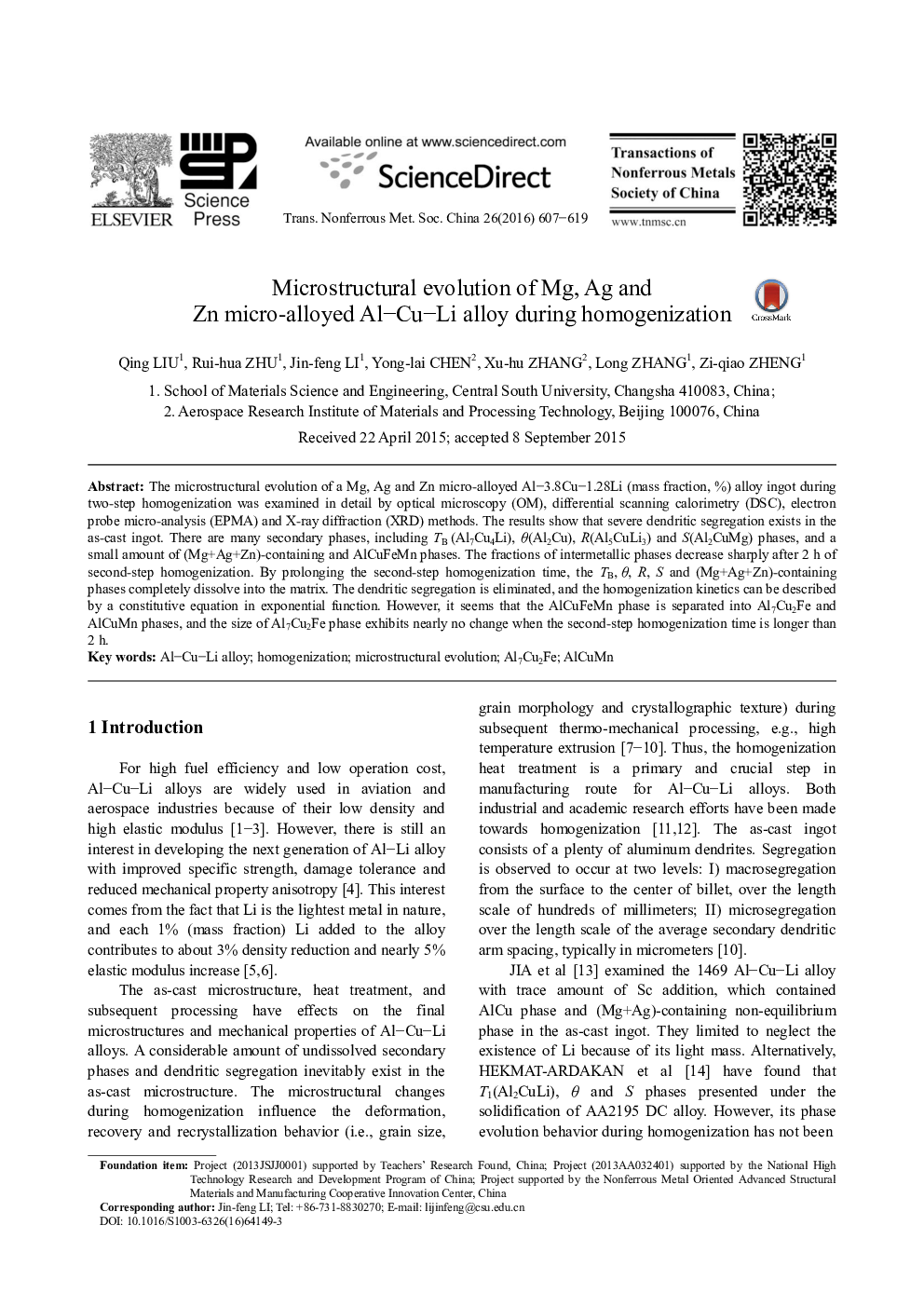| Article ID | Journal | Published Year | Pages | File Type |
|---|---|---|---|---|
| 1635735 | Transactions of Nonferrous Metals Society of China | 2016 | 13 Pages |
Abstract
The microstructural evolution of a Mg, Ag and Zn micro-alloyed Al-3.8Cu-1.28Li (mass fraction, %) alloy ingot during two-step homogenization was examined in detail by optical microscopy (OM), differential scanning calorimetry (DSC), electron probe micro-analysis (EPMA) and X-ray diffraction (XRD) methods. The results show that severe dendritic segregation exists in the as-cast ingot. There are many secondary phases, including TB (Al7Cu4Li), θ(Al2Cu), R(Al5CuLi3) and S(Al2CuMg) phases, and a small amount of (Mg+Ag+Zn)-containing and AlCuFeMn phases. The fractions of intermetallic phases decrease sharply after 2 h of second-step homogenization. By prolonging the second-step homogenization time, the TB, θ, R, S and (Mg+Ag+Zn)-containing phases completely dissolve into the matrix. The dendritic segregation is eliminated, and the homogenization kinetics can be described by a constitutive equation in exponential function. However, it seems that the AlCuFeMn phase is separated into Al7Cu2Fe and AlCuMn phases, and the size of Al7Cu2Fe phase exhibits nearly no change when the second-step homogenization time is longer than 2 h.
Related Topics
Physical Sciences and Engineering
Materials Science
Metals and Alloys
Authors
Qing LIU, Rui-hua ZHU, Jin-feng LI, Yong-lai CHEN, Xu-hu ZHANG, Long ZHANG, Zi-qiao ZHENG,
